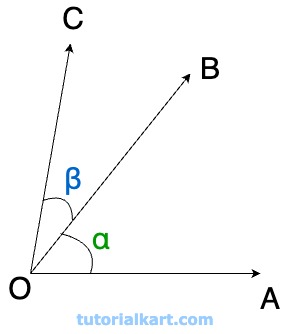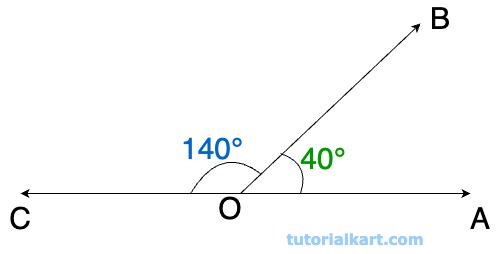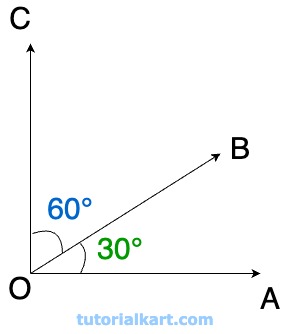Adjacent Angles
What is the meaning of adjacent angles? Adjacent angles are two angles that share a common side and a common vertex, but do not overlap.
In the following diagram, ɑ and β are the adjacent angles.

In simple terms, they are next to each other, with their sides touching and meeting at a shared point (O). These angles lie side by side on a plane, forming a pair where one of their sides (OB) is the same, while the other sides point in different directions.
For angles to be considered adjacent, three conditions must be met:
- They should have a common vertex (O)
- A common arm (side) – OB
- No common interior points.
This means that while the angles share some part of their boundary, they don’t extend into each other’s space.
In diagrams, adjacent angles are typically represented as angles that sit next to each other with their rays or arms forming a continuous line.
Adjacent angles are often used to solve problems involving the properties of geometric figures, construction of shapes, and understanding the relationships between different angles. By recognizing when angles are adjacent, you can also determine if they form other special angle relationships like linear pairs or vertical angles.
Examples of Adjacent Angles
Let’s look at a few examples to understand adjacent angles better.
Example 1: Adjacent Angles on a Straight Line
Imagine a straight line with a point in the middle, dividing it into two rays. If we draw a line from this point to form two angles, these angles will share the common vertex at the intersection and a common arm, which is the line between them. For example, if one angle measures 40 degrees and the other measures 140 degrees, they are adjacent because they share a side and a vertex.

Example 2: Adjacent Angles in an ‘L’ Shape
Consider an ‘L’ shape formed by two lines meeting at a right angle. The two angles created at the corner share a common arm and vertex, making them adjacent. If one angle is 30 degrees and the other is 60 degrees, these angles are side by side with a shared side and a meeting point at the vertex of the ‘L’.

